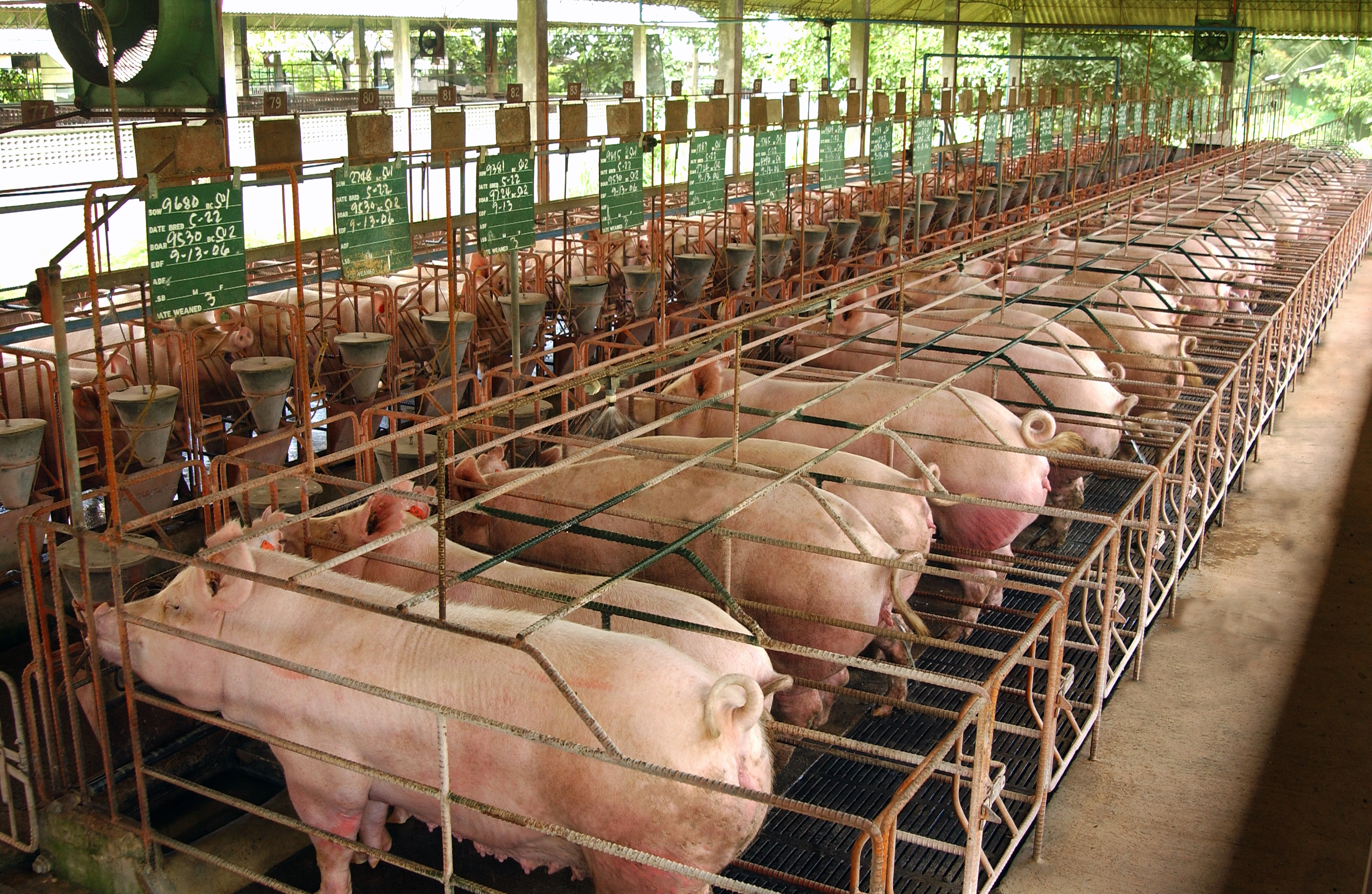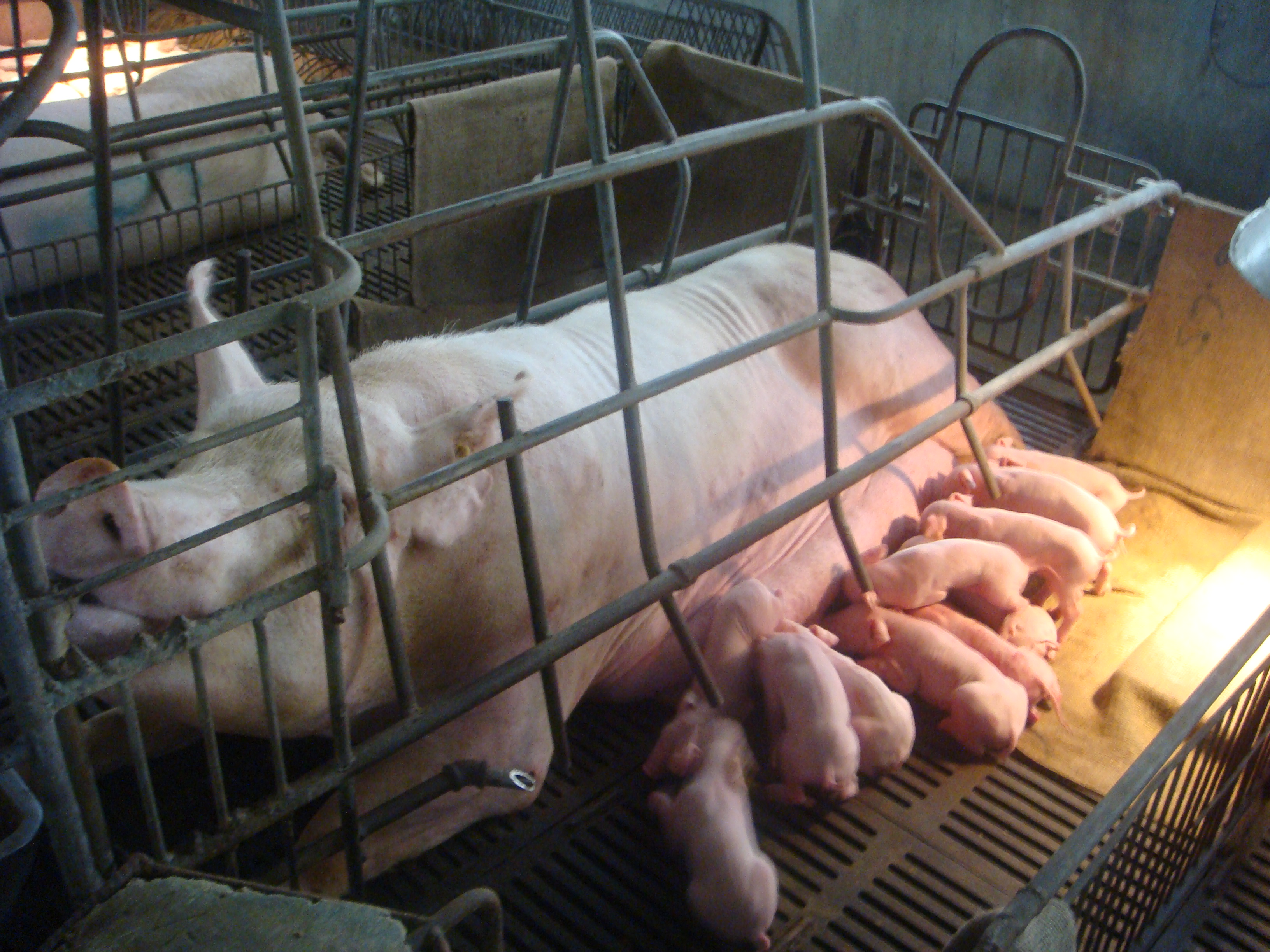



The importance of a "good gut feeling" in pig production
Good gut health can reduce pig mortality, improve weight gain and enhance welfare. It's a complicated topic, but understanding it can directly translate to happier, healthier and faster-growing pigs.If pigs could ‘own’ a skill, it would probably be eating food. Lots of food. We use terms like "pigging out" and "eating like a pig" to channel their skill and spirit at the buffet table after all.
Since our prized porkers are always on the munch, some of what they’ll ingest will invariably be laden with pathogens. As the largest organ which deals with immune functions, the gut is often the unseen first-line of defence against disease.
Gut health is a complicated topic, but understanding it can directly translate to happier, healthier and faster-growing pigs – meaning bigger hogs and better profit margins for all.
What is gut health?
Stephan Bischoff defines gut health as the "effective digestion and absorption of feeds, coupled with an absence of gastrointestinal tract illnesses".
“Nutrition accounts for 70 percent of hog production costs and is the most important driver in hog-raising,” explains Arlon Arganda, a nutrition consultant for commercial and industrial pig farms in the Philippines.
“A good feeding programme satisfies not just the nutritional requirements of pigs, but ensures good gut health. About 70 percent of immune system tissues are found in the gastrointestinal tract, so keeping it sound pays off with a stronger immune system and better feed conversion.”
Starting at the mouth and ending at the anus, the gastrointestinal tract is essentially a 20-plus meter long tube which extracts energy from feed pellets, molasses, vegetables and whatever else a pig eats. The warm, wet and nutrient-rich tract is home to thousands of species of symbiotic bacteria, most of which help its host resist pathogens and better absorb nutrients from food. However, pathogens like Clostridium perfringens and Coccidia also naturally occur in the gut.
A shift in diet – such as when piglets are weaned away from milk – can dramatically alter gut flora, leaving the host more vulnerable to sickness. Bad bacteria can multiply and cause wounds, lesions and infections, reducing piglets’ digestive and absorptive capacity. Energy and nutrients which would otherwise be used to put on extra pounds will be diverted to keeping sickness at bay – leading to lower feed-to-mass conversion rates and even death, particularly during the critical weaning period.
Because of the stress of moving away from pure milk to a corn and soy-based diet, piglet mortality after weaning is estimated to be as high as 35 percent in some farms. Even animals that do recover from gut disease find it hard to efficiently convert food to mass, making them less profitable to maintain.
The traditional solution to this would be to administer antibiotics, but consumers around the globe are demanding that more pork be antibiotic-free, so the search is on for natural alternatives.

Higher feed conversion ratios mean less input, environmental impacts and better profitability. © Infarmco
Gut health solutions
The optimal interaction of gut microbiota, intestinal immunity and the intestinal lining is the secret to a healthy gut.
Arlon, whose expertise covers natural feed formulation and nutritional strategies for both feed-millers and hog raisers, says that there are four major factors to consider in maintaining good gut health.
“Remember that gut health starts right after birth. The nutritional capacity of lactating sows should be prioritised to give their new-born piglets a head-start in terms of gut capacity via milk and colostrum," he explains.
"Second is to give pigs only high-quality ingredients which can be easily digested. Our focus should not just be on quantity, but the quality of food. Good food will strengthen the gut while bad food can lead to diarrhoea, dysentery, malnutrition and sickness.
"Third is to keep a constant lookout for new ingredients and nutritive additives to maintain good gut flora.
"Last and perhaps most important is to recognise that water is also an excellent medium to administer nutrients. I am a big proponent of this and our initial studies have shown outstanding results.”

This often leads to diarrhoea, malnutrition or even death. A solid understanding of gut health can reduce weaning mortality to under 5 percent. © Infarmco
Preventative measures like good biosecurity can also minimise the entry of disease, particularly with global outbreaks like the African swine fever (ASF) hurtling at full-speed.
Other solutions which have proven to curb gut pathogens include additives such as organic acids, essential oils, microbials, prebiotics to stimulate the growth of good bacteria and probiotics or the direct introduction of good gut bacteria.
Many of these are already commercially-available, with companies like Kemin offering various products to induce gut health. These range from Aleta, which boosts immunity to Kem San, which kills pathogens in drinking water. Alltech offers solutions like Sel-Plex, which supports mineral retention for optimal growth performance, to Viligen, which inhibits the growth of potentially-deadly Salmonella and E. coli. Dupont Animal Nutrition offers Syncra SWI, which makes digestion more efficient, increasing feed conversion by 3 percent.
Though seemingly costly, embracing these products can potentially reap good business returns.
Arlon cautions that gut health has always been a complex topic and there are many inputs and variables to consider to optimise results. Actual farm testing via monthly or even weekly monitoring of animal responses is an absolute must, as the responses of different hog breeds in various localities to different natural or commercial solutions can vary widely.
“Vigilance and total quality assurance is your farm’s first line of defence,” he concludes.
“Each delivery of ingredients should be high-quality and tested before acceptance. Remember that when it comes to hog nutrition and maintaining gut health, garbage in means garbage out.”
With continuous research by scientists and farmers worldwide, our porkers might soon be dining on antibiotic-free food which promotes great gut health. We’ve got a good feeling about it.







